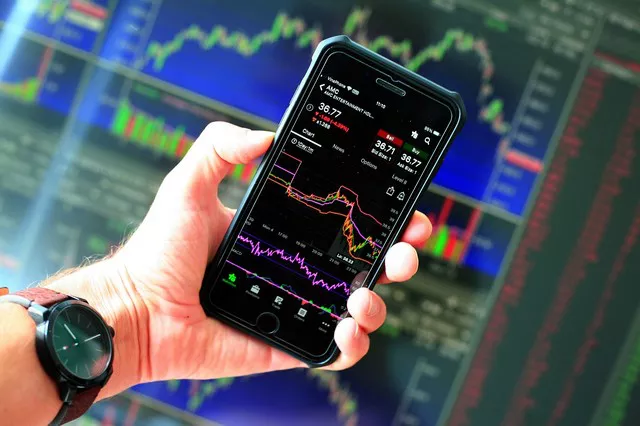In the dynamic realm of financial markets, understanding the intricacies of different investment instruments is key to making informed decisions. The S&P 500 VIX Futures, a derivative of the S&P 500 Index, has gained significant attention as a tool for gauging market volatility and potentially profiting from it.
Understanding S&P 500 VIX Futures
S&P 500 VIX Futures are financial instruments that allow traders to speculate on the future levels of market volatility as measured by the CBOE Volatility Index, commonly known as the VIX. The VIX is often referred to as the “fear gauge” as it reflects investors’ expectations of market volatility over the next 30 days.
1. Role of Futures Contracts
Futures contracts, including S&P 500 VIX Futures, serve as vehicles for traders and investors to express views on the direction of market volatility. These contracts provide an opportunity to profit from both rising and falling volatility levels.
2. Volatility as an Asset Class
The introduction of S&P 500 VIX Futures has transformed market volatility into an investable asset class. Traders can now trade the expectation of volatility itself, rather than the underlying securities.
Accessing S&P 500 VIX Futures Markets
Accessing S&P 500 VIX Futures markets requires engagement with brokerage platforms and trading systems that offer exposure to volatility as an asset.
1. Online Brokerage Platforms
Online brokerage platforms such as TD Ameritrade, E*TRADE, and Interactive Brokers typically provide access to S&P 500 VIX Futures trading. These platforms offer real-time data, trading tools, and educational resources.
2. Volatility Trading Platforms
Some specialized platforms focus exclusively on volatility trading. These platforms offer advanced charting, technical analysis tools, and direct access to futures exchanges, catering specifically to volatility-focused traders.
Interpreting S&P 500 VIX Futures Movements
Interpreting movements in S&P 500 VIX Futures requires an understanding of the VIX and its relationship to market sentiment.
1. Low VIX Levels
Low levels of the VIX often indicate a perceived calm and complacent market environment. It suggests that investors expect minimal fluctuations in the S&P 500 Index over the next 30 days.
2. High VIX Levels
Elevated VIX levels are often associated with increased market uncertainty and potential for significant price swings. This may reflect heightened investor concerns and expectations of increased market volatility.
Utilizing S&P 500 VIX Futures in Investment Strategies
Incorporating S&P 500 VIX Futures into investment strategies requires a nuanced approach and an understanding of market dynamics.
1. Hedging and Portfolio Diversification
S&P 500 VIX Futures can serve as a hedging tool, helping investors protect their portfolios during periods of market turmoil. Additionally, adding VIX exposure can provide portfolio diversification benefits, as volatility tends to rise when equities decline.
2. Speculation on Volatility
Traders can speculate on the direction of market volatility using S&P 500 VIX Futures. A bullish view on volatility might lead to buying VIX futures contracts, while a bearish view could involve shorting these contracts.
3. Pairing with Equity Positions
Investors can use S&P 500 VIX Futures as a complement to their equity positions. During times of market stress, rising VIX levels could offset losses in the equity portion of the portfolio.
4. Implementing Spread Strategies
Spread strategies involve trading the price difference between two related contracts. For example, traders might execute a “calendar spread” by simultaneously buying and selling S&P 500 VIX Futures contracts with different expiration dates.
Risks and Considerations
While S&P 500 VIX Futures offer unique opportunities, it’s crucial to recognize the associated risks and factors to consider.
1. Volatility of Volatility
S&P 500 VIX Futures can be highly volatile themselves, and their prices can fluctuate significantly in response to market sentiment and events.
2. Contango and Backwardation
Contango and backwardation refer to the shape of the futures curve. Contango occurs when futures prices are higher than the expected future spot prices, while backwardation occurs when futures prices are lower. Traders need to understand the implications of these conditions on their trading strategies.
3. Risk Management
Given the potential for significant price swings in S&P 500 VIX Futures, risk management strategies are paramount. Utilizing appropriate position sizing, setting stop-loss orders, and having a clear exit strategy are essential.
Conclusion
S&P 500 VIX Futures have revolutionized the way traders and investors perceive and engage with market volatility. As a derivative of the VIX, they offer a unique opportunity to trade volatility itself, a previously inaccessible asset class. By understanding the role of futures contracts, interpreting movements in the VIX, and strategically incorporating S&P 500 VIX Futures into investment strategies, market participants can navigate the complexities of the financial markets and potentially benefit from shifts in market sentiment. However, it’s essential to approach volatility trading with a deep understanding of the associated risks and a commitment to continuous learning and adaptation.


